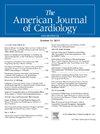Supra-Annular Self-Expanding Versus Balloon-Expandable Valves for Valve-in-Valve Transcatheter Aortic Valve Replacement
IF 2.1
3区 医学
Q2 CARDIAC & CARDIOVASCULAR SYSTEMS
引用次数: 0
Abstract
Self-expanding (SE) and balloon-expandable (BE) transcatheter heart valves (THVs) have not been extensively studied in valve-in-valve (ViV) transcatheter aortic valve replacement (TAVR). We compared outcomes of supra-annular SE and BE THVs used for ViV-TAVR through a retrospective analysis of institutional data (2013 to 2023) including all patients who underwent ViV-TAVR (TAVR in previous surgical aortic valve replacement). Unmatched and propensity-matched (1:1) comparisons of clinical and echocardiographic outcomes were undertaken in SE and BE THVs along with Kaplan-Meier survival analysis. A total of 315 patients who underwent ViV-TAVR were included, of whom 73% received an SE THV. Median age was 77 years, and women comprised 42.5% of the population. Propensity-score matching (1:1) yielded 81 matched pairs. Implanted aortic valve size was comparable in the groups (23 mm [23 to 26] vs 23 mm [23 to 26], p = 0.457). At 30 days after ViV-TAVR, the SE group had a lower mean aortic valve gradient (14 mm Hg [11 to 18] vs 17.5 mm Hg [13 to 25], p = 0.007). A greater number of patients with BE THV had severe prosthesis-patient mismatch (16% vs 6.2%, p = 0.04). At 1-year follow-up, the SE THV group had a lower aortic valve gradient (14.0 mm Hg [9.6 to 19] vs 17 mm Hg [13 to 25], p = 0.04) than that of the BE THV group; 30-day mortality was 2.7%, whereas 1-year mortality was 7.5% and comparable in the groups. Survival and stroke incidence were similar in the groups up to 5 years. In conclusion, SE and BE THVs had comparable survival after ViV-TAVR. The higher residual aortic valve gradients in BE THVs are likely due to valve design and warrant long-term evaluation for potential structural valve degeneration.
用于瓣中瓣膜经导管主动脉瓣置换术的超心形自扩张瓣膜与球囊扩张瓣膜。
自膨胀(SE)和球囊扩张(BE)经导管心脏瓣膜(THV)在瓣膜内经导管主动脉瓣置换术(ViV-TAVR)中的应用尚未得到广泛研究。我们通过对机构数据(2013-2023 年)的回顾性分析,比较了用于 ViV-TAVR 的环上 SE 和 BE THV 的疗效,其中包括所有接受 ViV-TAVR 的患者(既往接受过手术 AVR 的 TAVR 患者)。对 SE 和 BE THV 的临床和超声心动图结果进行了非匹配和倾向匹配(1:1)比较,并进行了 Kaplan-Meier 生存分析。共纳入了315名接受ViV-TAVR的患者,其中73%接受了SE THV。中位年龄为77岁,女性占42.5%。倾向分数匹配(1:1)产生了81对匹配对。两组的植入主动脉瓣大小相当(23 毫米 [23-26] 对 23 毫米 [23-26],P=0.457)。在 ViV-TAVR 术后 30 天,SE 组的平均主动脉瓣梯度较低(14 mmHg [11-18] vs. 17.5 mmHg [13-25],P=0.007)。更多的 BE 患者存在严重的假体与患者不匹配(PPM)(16% 对 6.2%,P=0.04)。随访一年时,与 BE 组相比,SE 组的主动脉瓣梯度较低(14.0 mmHg [9.6-19] vs. 17 mmHg [13-25],P=0.04)。30 天死亡率为 2.7%,一年死亡率为 7.5%,两组死亡率相当。两组 5 年内的存活率和中风发生率相似。总之,SE和BE THV在ViV-TAVR术后的存活率相当。BE THV的主动脉瓣残余梯度较高,这可能是由于瓣膜设计造成的,因此需要对潜在的结构性瓣膜退化进行长期评估。
本文章由计算机程序翻译,如有差异,请以英文原文为准。
求助全文
约1分钟内获得全文
求助全文
来源期刊

American Journal of Cardiology
医学-心血管系统
CiteScore
4.00
自引率
3.60%
发文量
698
审稿时长
33 days
期刊介绍:
Published 24 times a year, The American Journal of Cardiology® is an independent journal designed for cardiovascular disease specialists and internists with a subspecialty in cardiology throughout the world. AJC is an independent, scientific, peer-reviewed journal of original articles that focus on the practical, clinical approach to the diagnosis and treatment of cardiovascular disease. AJC has one of the fastest acceptance to publication times in Cardiology. Features report on systemic hypertension, methodology, drugs, pacing, arrhythmia, preventive cardiology, congestive heart failure, valvular heart disease, congenital heart disease, and cardiomyopathy. Also included are editorials, readers'' comments, and symposia.
 求助内容:
求助内容: 应助结果提醒方式:
应助结果提醒方式:


